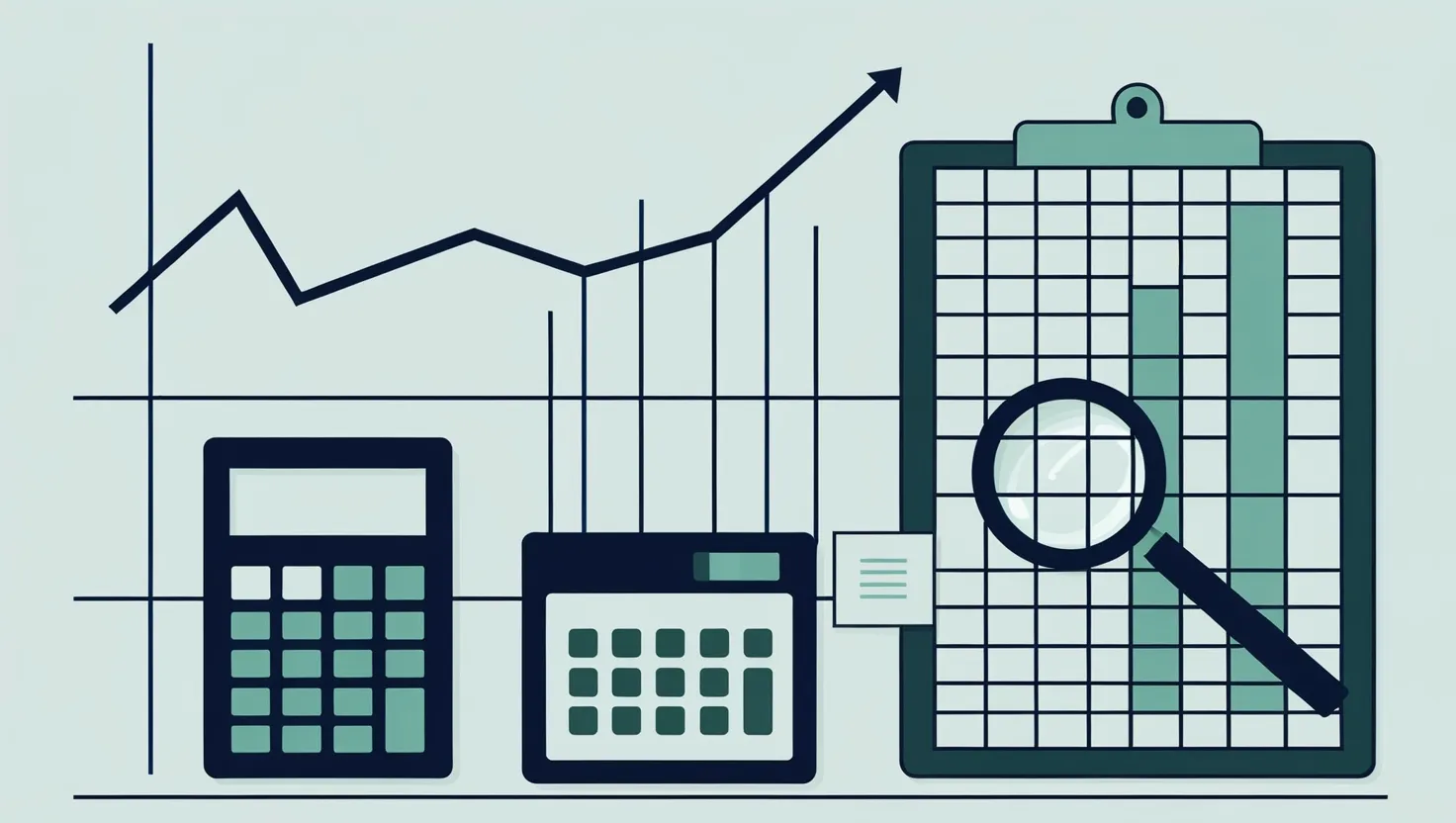Financial ratios are the lifeblood of company analysis, offering a window into the inner workings of a business. While many investors and analysts focus on the basics like price-to-earnings and debt-to-equity, there’s a whole world of advanced ratios that can provide deeper insights. Let’s dive into five financial ratios that go beyond the surface level and explore how they can enhance our understanding of a company’s financial health and performance.
We’ll start with gross profit margin trends. This ratio measures the percentage of revenue left after accounting for the cost of goods sold. While a single snapshot of gross margin is useful, tracking its trajectory over time can reveal crucial information about a company’s competitive position and pricing power.
Take Apple, for instance. The tech giant has long been known for its hefty profit margins, but in recent years, we’ve seen a gradual decline. Why? As the smartphone market matures and competition intensifies, Apple has had to make concessions on pricing. This doesn’t necessarily spell doom for the company, but it does indicate a shift in market dynamics that investors should be aware of.
To calculate gross profit margin, we simply divide gross profit by revenue and express it as a percentage. But the real value comes from plotting this figure over multiple quarters or years. Are margins expanding, contracting, or holding steady? Each scenario tells a different story about the company’s trajectory.
“Price is what you pay. Value is what you get.” - Warren Buffett
This quote from the Oracle of Omaha reminds us that raw numbers don’t tell the whole story. A declining gross margin might seem alarming at first glance, but if it’s accompanied by rapidly growing revenue, it could signal a strategic move to capture market share.
Next up is the interest coverage ratio, a metric that’s particularly relevant in today’s environment of rising interest rates. This ratio tells us how easily a company can pay the interest on its outstanding debt. It’s calculated by dividing earnings before interest and taxes (EBIT) by interest expense.
Let’s consider utility companies, which often carry significant debt loads to finance their infrastructure. Comparing interest coverage ratios across the sector can highlight which firms are best positioned to weather economic storms. A company with an interest coverage ratio of 5 is in a much stronger position than one with a ratio of 2, as it has more breathing room to meet its debt obligations.
But what constitutes a “good” interest coverage ratio? That depends on the industry and the economic climate. During periods of low interest rates, a lower ratio might be acceptable. But as rates rise, we’d want to see higher coverage to ensure the company isn’t at risk of default.
How comfortable would you feel investing in a company with an interest coverage ratio of 1.5? What about 10? These are the kinds of questions we need to ask ourselves as we analyze potential investments.
Moving on to the asset turnover ratio, we’re looking at how efficiently a company uses its assets to generate sales. This is particularly important for retail and manufacturing businesses with significant physical assets. The formula is simple: divide net sales by average total assets.
Home Depot provides an interesting case study here. Over the past decade, the home improvement retailer has made significant strides in improving its asset efficiency. By optimizing inventory management and leveraging technology, they’ve been able to generate more sales from the same asset base. This improvement in asset turnover has contributed to higher returns on invested capital, benefiting shareholders.
When analyzing asset turnover, it’s crucial to compare companies within the same industry. A software company will naturally have a much higher asset turnover than a heavy machinery manufacturer. The key is to look for trends and compare against industry benchmarks.
“The stock market is filled with individuals who know the price of everything, but the value of nothing.” - Philip Fisher
Fisher’s words remind us that surface-level metrics can be misleading. A company might appear expensive based on traditional valuation ratios, but if it’s utilizing its assets more efficiently than peers, it could be undervalued.
Now let’s turn our attention to Economic Value Added (EVA), a measure that’s gained popularity in recent years. EVA goes beyond traditional profit metrics by accounting for the full cost of capital. It’s calculated by subtracting the cost of capital from net operating profit after taxes.
EVA is particularly useful when analyzing growth-stage companies that may not yet be profitable in the traditional sense. These firms often require significant capital investment, which can obscure their true economic performance. By factoring in the cost of this capital, EVA provides a clearer picture of whether the company is truly creating value for shareholders.
Consider a young tech company that’s investing heavily in research and development. Traditional profit metrics might paint a gloomy picture, but if the company’s EVA is positive and growing, it suggests that these investments are paying off in terms of value creation.
Calculating EVA can be complex, as it requires estimating the company’s cost of capital. But the insights it provides can be invaluable, especially for companies in capital-intensive industries or those undergoing significant growth phases.
Have you ever considered a company’s EVA when making investment decisions? If not, how might it change your perspective on certain stocks?
Finally, let’s explore the cash conversion cycle, a composite metric that measures how long it takes for a company to convert its investments in inventory and other resources into cash flows from sales. This cycle is calculated by adding days inventory outstanding and days sales outstanding, then subtracting days payables outstanding.
Amazon serves as a fascinating example here. The e-commerce giant has managed to achieve a negative cash conversion cycle, meaning it receives payment from customers before it pays its suppliers. This gives Amazon a significant working capital advantage, essentially allowing it to finance its operations with supplier credit.
A shorter cash conversion cycle generally indicates more efficient operations and better cash management. However, it’s important to consider industry norms and the specific circumstances of each company. A longer cycle might be acceptable if it’s part of a deliberate strategy to offer more favorable terms to customers or to maintain higher inventory levels for strategic reasons.
When analyzing the cash conversion cycle, look for trends over time and compare against industry peers. A company that’s consistently shortening its cycle could be improving its operational efficiency, which often translates into better financial performance.
“I will tell you how to become rich. Close the doors. Be fearful when others are greedy. Be greedy when others are fearful.” - Warren Buffett
Buffett’s famous quote reminds us that sometimes, the most valuable insights come from looking at things differently than the crowd. While others might focus solely on revenue growth or profit margins, digging into metrics like the cash conversion cycle can uncover hidden strengths or weaknesses in a company’s operations.
To make the most of these advanced ratios, consider creating spreadsheet templates for each one. This will allow you to quickly calculate and track these metrics for multiple companies over time. Benchmarking against industry peers is crucial, as what constitutes a “good” ratio can vary widely between sectors.
Tracking these ratios on a quarterly basis can provide early warning signs of potential issues. For instance, a steadily declining interest coverage ratio might indicate growing financial stress, even if other metrics appear healthy.
Remember, no single ratio tells the whole story. The real power comes from combining multiple ratios to build a comprehensive picture of a company’s financial health. For example, a company with expanding gross margins, improving asset turnover, and a shortening cash conversion cycle is likely firing on all cylinders operationally.
Finally, consider incorporating these advanced ratios into your investment selection criteria. They can help you identify companies with strong fundamentals that might be overlooked by investors focused solely on more common metrics.
As we wrap up, I encourage you to think about how these ratios might change your perspective on companies you’re currently analyzing or invested in. Are there any surprises? Any companies that look stronger or weaker than you previously thought?
Remember, financial analysis is as much an art as it is a science. These ratios are powerful tools, but they’re most effective when combined with qualitative analysis and a deep understanding of the company’s business model and competitive landscape.
So, the next time you’re evaluating a potential investment, don’t stop at the basic ratios. Dive deeper. Look at gross margin trends, interest coverage, asset turnover, EVA, and the cash conversion cycle. You might be surprised at what you find lurking beneath the surface.






